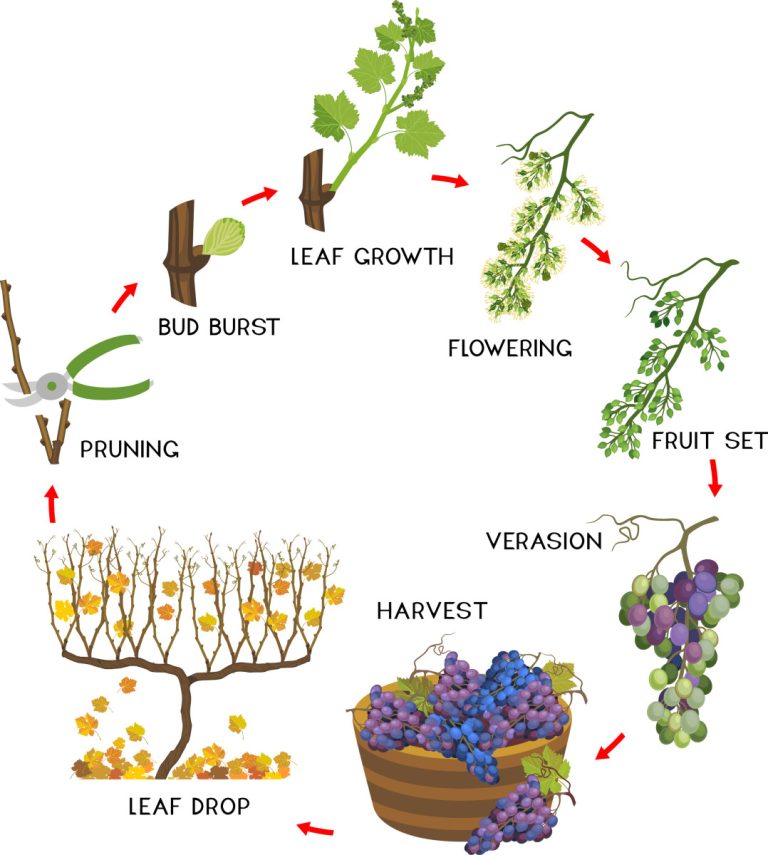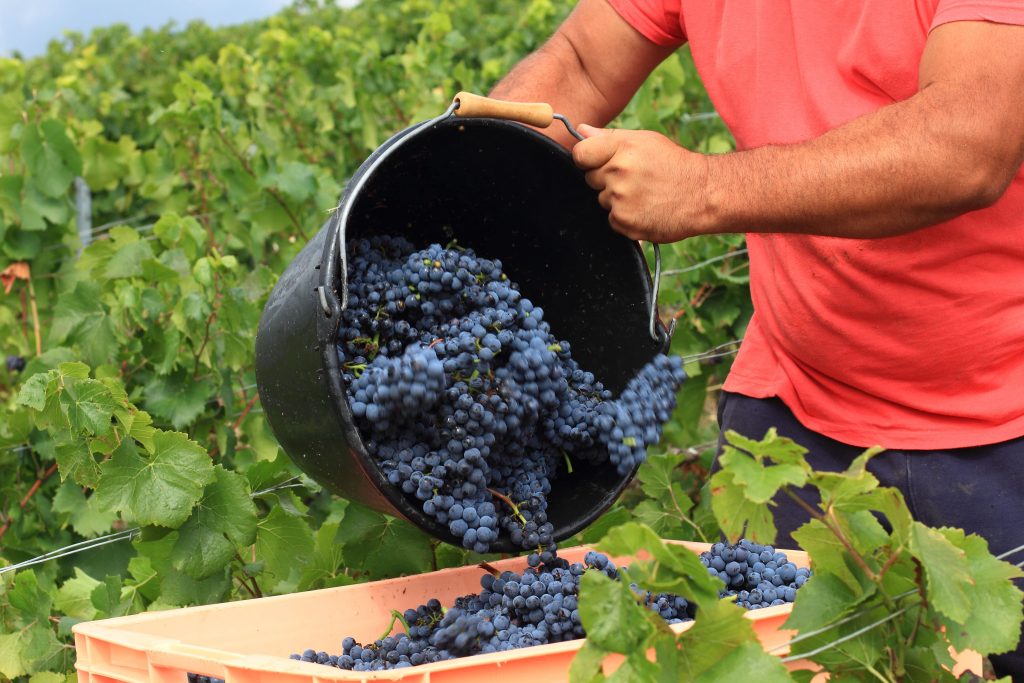A biological clock to time vineyard management operations
Phenology is the study of recurring events in the life cycle of plants and animals and how these cycles are affected by seasonal changes or environmental factors. Examples of phenological events in the plant world are flowering and bud-burst and in the animal world, egg hatching and insect emergence.
In agriculture, the timing of plant phenological events is a crucial driver of agroecosystem functioning and productivity. Not only phenology determines the length of the productive season and its synchronization with favorable climate conditions, but its knowledge is necessary to time and optimize agricultural practices. For example, the impact of water stress varies according to the different crop phenological stages. For this reason, irrigation may be scheduled depending on this variable. Crop phenology is also important for fertilization scheduling, pest management, and harvesting operations, to name a few.
Due to the key role of phenology in crop management, it is important to understand how the yearly cycle of plants unfolds and how it is affected by its environmental drivers.
Grapevine phenology
Similarly to other crops, grapevine develops following a well-defined yearly cycle, marked by phenological events.
In temperate zones with cold winters, grapevines actively grow from March/April to October/November, i.e., “the growing season.”. A cultivar’s ability to successfully ripen fruit during the growing season is critical, and most wine grape cultivars require 155–200 frost-free days to reach harvest maturity. Additionally, some post-harvest frost-free days are required for the vines to build up reserve carbohydrates prior to dormancy.
The stages in the growth cycle
The grape starts its annual growth cycle in the spring with bud-break which begins around March when daily temperatures begin to surpass 10 °C. In pruned vines, the start of this cycle is marked by a “bleeding” of the vine when sap exits the cuts left over from pruning the vine. Leaf unfolding follows shortly after bud-break.
Depending on temperatures, approximately 2 months after bud-break, flowering begins with small flower clusters appearing on the tips of the young shoots. This is usually occurring in May. The flowers then start to grow in size with individual flowers becoming observable, pollination takes then place.
The stage of fruit set follows flowering almost immediately at the beginning of June, when the fertilized flower begins to develop a seed and grape berry to protect the seed.
Following fruit set, the grape berries are green and hard to the touch. They have very little sugar and are high in organic acids. They begin to grow to about half their final size when they enter the stage of veraison, which occurs around the end of July. Veraison corresponds to the onset of fruit maturation and starts with an abrupt softening of the berry, followed by sugar loading and acid degradation. In red and black cultivars the biosynthesis of anthocyanin results in berry skin colouring. The weather during this phenophase is crucial for berry quality and future wine aromatic profile.
At the end of maturation, usually around September, grapes are harvested to be transformed in wine, in the wine making process, or to be eaten as table grapes. The time of harvest depends on a variety of human and environmental factors. Indeed, this decision very much depends on the subjective evaluation of grape ripeness which in turns depends on the production objectives of the grower/winery The threat of detrimental weather or disease can also play a role in the time table. The balance of all these factors affect the timing of harvest.
Finally, in October /November, senescence takes place, involving chlorophyll break down, leaf colouring and leaf fall. Dormancy, or inability to grow in warm conditions, sets in at the end of September and deepens until it is released by chilling temperatures and long photoperiod. Grapevines are then ready to resume growth and start a new season.

Phenology prediction for a better vineyard management
The precise monitoring of these stages on the scale of a vineyard is essential in ensuring a successful technical management. It provides the means for ascertaining the developmental status of the grapevine and hence to decide when and how to conduct technical operations.
Irrigation
A precise knowledge of phenological phases is crucial to have an effective irrigation strategy in the vineyard.
Indeed, the effect of water deficit on berry growth varies according to the phenological phase during which it is applied. Research shows that it is greater when it is applied during berry formation (between flowering and veraison) when can limit cell division and expansion and decrease the final size of berries and total yield. Similarly, a stress applied at the time of flower bud differentiation can negatively impact fruitfulness and production the following year.
Phytosanitary treatments
Many diseases respond to specific weather conditions, and attack their host during specific vulnerability windows, which often correspond to particular phenological phases. For example, grey mould (botrytis cinerea) penetrates into senescing flowers at the end of flowering but only develops at a later stage, between veraison and harvest. Powdery mildew on the other hand, can produce primary infections on green parts only before veraison, due to its inability to penetrate old and thickened leaf tissue. To optimize phytosanitary planning the prediction of phenological vulnerability to specific diseases is thus crucial
Cover crop management
A precise and informed management of cover crop can benefit vineyards and grape quality in many ways. However in order to avoid excessive competition between the cover crop and the grapevine the vigor of the cover crop should be limited during the period where water is a limiting factor for grapevine growth, which corresponds to specific phenological phases.
Harvest
The precise knowledge of the phenological status of grapevine allows to assess the relative ripeness levels of the parcels and characterize the current vintage to decide when harvest should take place, given the oenological objectives of the grape grower. For example, in a vineyard dedicated to the production of dry whites or spumante-style wine, harvest might be conducted relatively early to ensure high levels of acidity and freshness.

To time these operations so that they are conducted during the right phenological phase, phenology modelling comes to the aid of on-field monitoring. Phenological models use the relationship between weather variables and plant development to simulate and predict plant phenology so that growers can plan their technical operations effectively.
Vintel, predict your vineyard phenology and plan your viticultural operations
To make vineyard management easy, ITK has developed a smart digital solution: Vintel®. The Decision Support System (DSS) Vintel® helps to manage irrigation and nitrogen fertilization in real time according to vine water and nitrogen needs, by taking into account the phenological phase of your vineyard, which is predicted using phenological models.
If you want to know more about Vintel® see here.
Contact us now and ask for a demo!


